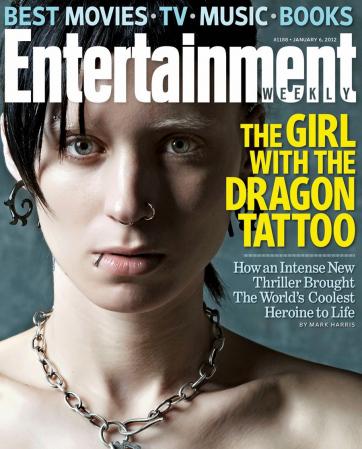
"The World's Coolest Heroine"
By Jonathan J. Morris, Antiscribe.com
Released about two months ago into the crowded glut of holiday awards season, David Fincher’s movie version of The Girl with the Dragon Tattoohas clearly already had its moment in the Scandinavian sun. Arriving with a heavy dose of critical praise and entering theaters with a snarl of assumed feminist defiance, the film left them with surprising rapidity and an almost audible whimper over how little money it made, at least compared to somewhat over-elevated expectations. Based on the first of the late Stieg Larssen’s bestselling “Millennium” novels, which, like many bestsellers, falls firmly into the category of “overrated,” the film will nonetheless likely prove to be the first of a cinematic trilogy, in spite of its modest success. Of course, though it hardly needs to be restated, this was not the first movie version of Larssen’s novel, nor even the first in recent memory. The 2009 Swedish language adaptation, by the standards of foreign films, had a fairly significant cultural footprint in the United States and earned about $100 million dollars worldwide. As films go, the Swedish version wasn’t bad for a straight-forward mystery movie; elevated, if that’s the right word for it, by its unflinching portrayal of explicit sexual violence and the characterization of its singular heroine, Lisbeth Salander. Indeed, the most memorable aspect of that film was Salander, dynamically portrayed by Noomi Rapace, who deservedly has been parlaying that part into international stardom. No doubt Rooney Mara, who plays the character in the American version, has herself already been doing the same.
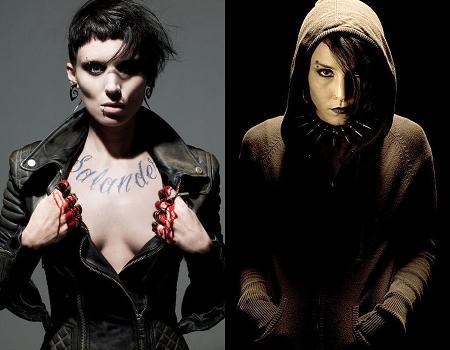
The Two Lisbeths: The American Rooney Mara and the Swedish Noomi Rapace.
If you’re not familiar with the plot of The Girl with the Dragon Tattoo, the basic narrative of all three versions tells of Mikael Blomkvist, a reporter for a fictional Swedish investigative magazine called Millennium. Blomkvist, a forty-something lefty with an activist bent, is facing jail time and the loss of his life savings for libeling a prominent businessman (in Sweden, where the story is set, judgments under civil law can result in incarceration). Forced into resigning from his magazine and needing the money, Blomkvist takes a job with the reclusive billionaire patriarch of a very dysfunctional family who wants the reporter to investigate the disappearance of a beloved teenage niece who vanished from the family’s secluded island compound decades earlier. Meanwhile, Lisbeth Salander, a bisexual, Goth-punk antisocial cyber-hacker in her early twenties, complete with a traumatic childhood and prison record, is brought into Blomkvist’s world when she is hired by the billionaire ‘s representatives to investigate the reporter. In a now infamous sequence, Lisbeth is viciously raped by her new legal guardian (kind of a parole officer), only to quickly turn around and wreck extreme, near equally depraved vengeance upon him. As the plot thickens, it appears that Blomkvist’s missing persons case may be somehow linked to a series of depraved, misogynistic ritual murders, leading him to recruit Salander to aid him in solving the sordid mystery. Said mystery leads the pair into such realms as Nazism, vile chauvinism, rape, incest, the oppressive patriarchy of modern society, and the dark underbelly of contemporary Swedish history. Though Blomkvist, in many respects, is the main character, not to mention a very thinly disguised surrogate for author Larssen (who was himself a middle-aged, left-wing investigative reporter and magazine editor when he wrote the novel), the story really belongs to Salander. It’s fairly clear that the foremost reason for the popularity of Larssen’s novels has been the unique appeal of Salander. I also don’t think it’s unfair to say that the predominant audience for Larssen’s novel has been women, and regardless of one’s feelings about the book, it’s not difficult to understand why. Larssen, who didn’t live to see his novels become bestsellers, let alone films (he passed away from a heart attack in 2003), clearly understood that sometimes success is based less on achieving greatness than on filling a perceived void. With the case of the “Millennium” books, Larssen benefitted, unknowingly or not, from the fact that there were few, if any, popular novels in the mystery or thriller genre that implicitly reflected the evils of the West’s patriarchal, misogynistic society and thus touched on the frustration that many women likely feel towards such overwhelming and marginalizing hegemony. And to do this, Larssen crafted a unique character that represented ostensibly the ultimate iconoclast of patriarchy: Lisbeth Salander.
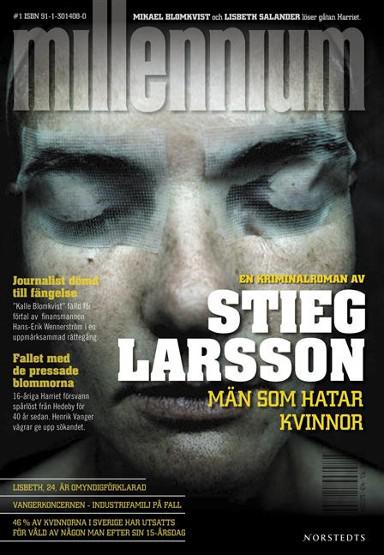
The original cover for "Män Som Hatar Kvinnor," or "Men Who Hate Women." In English, it was later re-titled "The Girl with the Dragon Tattoo."
It’s pretty well known that the original title of Larssen’s novel, in Swedish, didn’t translate to The Girl with the Dragon Tattoo, but Men Who Hate Women. It was the novel’s UK publisher who implemented the name change to make the novel appear less confrontational, less abrasive, less like a work of nonfiction, and more of a direct reference to its marketable heroine, Salander. As the other, lesser novels progress, the scope of Larssen’s story becomes much broader, transforming into a thinly-veiled, symbolic narrative for female repression, placing Salander at the center of multi-generational government conspiracy that has specifically targeted her for oppression. Lisbeth Salander, especially as the publicity of the new film unfurled, has been mentioned by a number of female observers as a figure of female empowerment; one writer recently in Entertainment Weekly even called her a role model. All told, I understand the appeal; at the risk of over-generalizing, it’s pretty clear to me that many of the fans of The Girl with the Dragon Tattoo going into the novel were not familiar with the alternative lifestyles and pseudo-feminist counterculture that Salander was designed to represent. In some respects, I find it similar to what – I feel – drove some people (specifically poorly read people with a limited worldview) crazy about The Da Vinci Code, in that it introduced them to ideas and characterizations that were largely unfamiliar to them. In the case of Da Vinci, it was the alternate theories of Christian history, and in the case of the Larssen novels, it’s the Lisbeth Salanders of the world: the angry, sexually ambiguous women who shirk conventions but are made relatable for the middle class/bourgeois worldview because of her background which, if it weren’t for the horrible sexual violence, could almost be considered Dickensian.
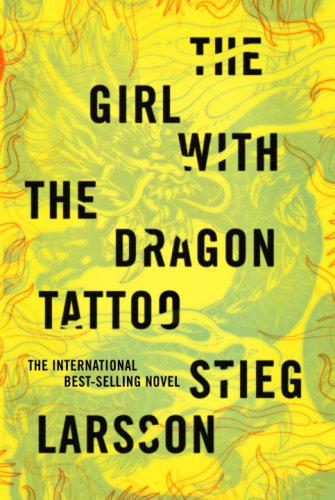
The exceedingly well-known American cover for "The Girl with the Dragon Tattoo."
Truth be told, though it should probably be clear by now that I’m not a fan of them, if the Larssen novels and films can be said to do one thing, very, very well it is indeed to capture the many aspects of our culture that seek to subjugate women, castigate them, and render them as sexualized objects in ways that are intensely hypocritical. Of course, one doesn’t have to look very far in our own American society, especially in recent weeks, with renewed debates over abortion and birth control, to see the ways in which politicians (and especially conservative Presidential candidates), religious organizations, and various activists and ideologues have generally marginalized women over issues that most specifically pertain to them. For those reasons, if nothing else, I would like to be able to root for Lisbeth Salander, to appreciate her, and, despite my feelings about the quality of the novels and the films, to applaud her as an important feminist character; she has been called, rightly or wrongly, a unique, fascinating heroine, whose ostensible aim is to be an antiestablishment, alt-lifestyle, avenging crusader against patriarchal dominance. In the end, though, I can’t see her as such, at least not unequivocally, because for all the novels’ critique about paternalist society, I just can’t ignore the fact that Lisbeth Salander is herself, first and foremost, a left-wing male’s sexual fantasy.
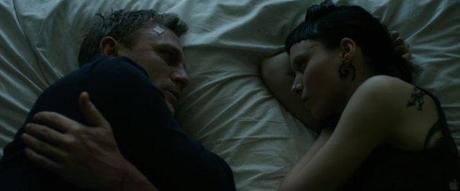
The left wing male and his sexual fantasy: Larssen's surrogate Mikael Blomkvist (Daniel Craig) and Lisbeth Salander (Rooney Mara).
An important element of the plot that I left out in my recap is one that almost everyone, even many who like the books, generally criticizes: during their investigation, Lisbeth, despite being brutally sodomized by her guardian and sexually active with other women earlier in the story, sleeps with Blomkvist, and in fact, initiates the intimacy. In both the novel and the American film, Lisbeth falls in love with Blomkvist, but in the end has her heart broken when he later returns to the arms of another woman: his married co-worker at Millennium. The Swedish film, to its great credit, chooses not to portray Lisbeth as being in love with the nearly middle-aged reporter, and instead makes Blomkvist the one to pine after Lisbeth.
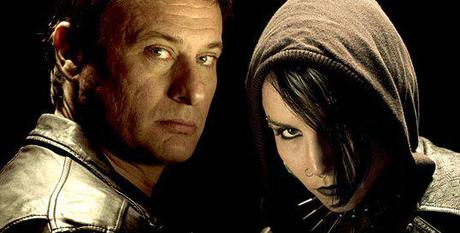
Blomkvist (Michael Nykvist) and Salander (Rapace) in the Swedish film; the filmmakers of this version rightfully realized that Larssen's originally conceived romantic dynamic didn't really work.
Of course, there is the obvious point here that the author had his surrogate sleep with his provocative female character, likely as either some form of wish fulfillment or, if we were going for the route of plausible deniability, because that’s just what leads in this kind of story tend to do. Either way, though, these trivialize the most serious problem, in that by making her an object of obvious wish fulfillment it undercuts her, not only as a truthful character, but as a symbol. It transforms her, ultimately, into an example of an emerging pop culture archetype: the Broken Girl. The Broken Girl is perhaps hard to describe without seeming insensitive, but I will try my best. A Broken Girl is one who carries around some deep trauma, usually sexually related or related to her sexuality (or both) and having to do with her father; that trauma could be abuse by the father (the most common kind), or abuse from the mother who is jealous of the affection the girl gets from her father. Either way, it’s all about fathers and father figures. The girl then grows up, though only to a point, into an iconoclastic overachiever, one who probably tries to assume some traditionally masculine traits (like say, sleeping with women). The Broken Girl remains this way, until, of course, she meets a Man, and particularly a Man who is completely accepting of her iconoclastic or antisocial ways (and probably also that thing she has for the ladies). Through the Man, the Broken Girl finds solace for her rage and becomes more of a complete person through her romantic, heteronormative relationship with him. The Girl, ideally then, becomes a Woman. Accept really, she isn’t a Woman, capitalized or otherwise; she’s still just a Broken Girl, one who has simply traded one Daddy for another.
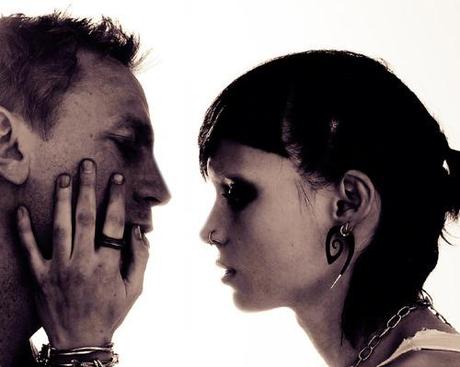
In the "Broken Girl" archetype, the girl is portrayed as needing and even wanting a heteronormative male relationship to make her feel complete.
There’s a reason why Broken Girls like Lisbeth Salander are perhaps becoming more prevalent, and it has nothing to do with the fact that some women find them empowering (although it helps). It’s because men, especially a certain kind of man, finds them to be alluring. And it’s here that I must mine a deep, unspoken element of the male psyche, especially the left-wing male psyche. It’s no secret that most men, even if they won’t admit it, find the “bad girl” type attractive, but the appeal of the Broken Girl, who shares many bad girl traits, goes deeper than that. The Broken Girl’s appeal comes in part due to her fragility, and especially the sexual aspect of it, and in the other part her sexual adventurousness, or to put it more bluntly, her bisexuality. Bisexuality is something of a tricky widget in strictly defining and identifying in our culture; while it is certainly a legitimate lifestyle choice and should always be treated as such, it’s obvious that there remains a certain perception of bisexuality in women, especially by heterosexual men, that is stereotypical and wrongheaded. The heterosexual male’s stereotype of bisexuality is that it’s something that makes women more sexually conscious, and thus more alluring (hence why it’s such a staple of porn). Yet there’s also something perceived as immature and naive about it; everyone has certainly heard of the “B.U.G.” stereotype in some form (“Bisexual Until Graduation”), which essentially supports the idea that women who find both men and women attractive only feel that way about the latter as a flirtation. Eventually, the expectation is that they outgrow it, forsaking sapphism when they decide that what they really need is a “real man” to provide them with a proper heteronormative existence. Therefore, part of the heterosexual male desire of the perceived “bisexual” female is itself not just one of sexual allure, but of self-empowering subjugation; the feeling that their masculinity is what the woman needs to stop them from desiring women.
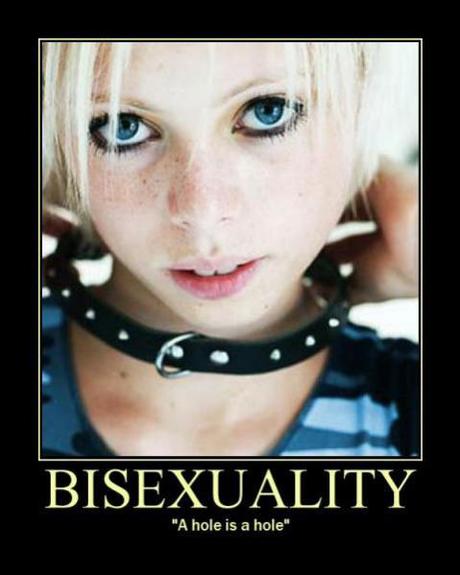
A crude yet popular online bisexuality meme, notable for portraying its female subject as being notably "girlish."
Of course, there are women who certainly play into this trap, willingly or not; I’ve certainly known some ladies who I’m fairly positive have claimed bisexuality to either present themselves as more alluring to men or to give themselves some liberal credibility (in other words, they can pretend they’re bisexual so they can share in some of the empathy and credibility many liberals engender towards the LGBT community). Conversely, I’ve also known women who, by all indications, were legitimate in their claims of bisexuality. That there are women who are the former, though, are a partial testament to the fact that there are men who find bisexuality alluring. And sadly, for a lot of left-wing males, their endorsement of LGBT rights and other liberal causes comes in part as a way to give themselves credibility – as part of an unspoken attempt to appear more attractive to the sexually open-minded women they secretly desire. I’ve seen it in practice, and I’m sure if you’re reading this, you’ve seen it, too. Hell, who among us on this side of the cultural fence hasn’t listened to some rant on the greatness of Marx, Lenin, Trotsky, or some such ideologue or ideology we would never, ever adhere to because we found that impassioned person to be attractive? But to those who adhere to the bisexual fantasy and let it dictate their actions and opinions essentially buy into a form of female objectification that undermines what they fallaciously claim to support: a belief in equality and empowerment for the oppressed. In these cases, they cast themselves as the Man in the Broken Girl narrative: the one who views these “girls” as incomplete without their masculine influence to correct them, who save them from one patriarchy only to subject them to their own. To me, the most telling aspect about the novel’s much noted name change wasn’t that it left men off the hook necessarily, but that in doing so, relabeled its heroine as a “girl” as opposed to a “woman.” Sadly, they were perhaps right to do so. I’m sorry to say it, but Salander is not a fully realized woman, but the paragon of the Broken Girl, who both the cumulative narrative of the novel and this new American film ultimately states needs an understanding male to help her realize her full potential. Damaged by other men who are caricatures of cruelty, Salander, either despite of or because of (no one seems to care which) her traumatic violation and abusive childhood, is sexually adventurous, but ultimately seems contented to be a sexual partner for a middle-aged, good-natured, and, for the most part, fairly boring lefty in Blomkvist. Ultimately, the perspective on Salander becomes that of a girl that in some significant part needs to be fixed, and the only way she can do that is through the love of Blomkvist, essentially exchanging masculine repression for sexual objectification. It is, to me, very telling that the two actors who played Blomkvist, Michael Nyqvist and Daniel Craig, could only allow their characters portray pure shock when Salander made her “move” on them. Having experienced these characters’ relationship now in three different works, it has never been the slightest bit convincing, and I think even if they remade this story a thousand more times, it never will be. In short, despite all of her enduring aspects of her character and personality that women can and do find empowering: her defiance against oppression, her refusal to be a victim, and her fearlessness toward living the life she wants are all largely subsumed by the fact that the character was subverted to the erotic impulses and indulgences of her creator.
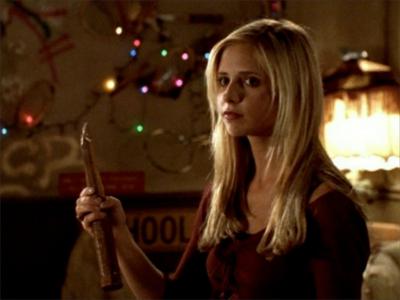
Sexy but empowered, the eponymous character from "Buffy the Vampire Slayer."
To address a counterargument before it’s made, I’m in no way saying that a character and female protagonist cannot be both sexually alluring and self-empowered. The eponymous character in Buffy the Vampire Slayeris proof of this, and alternatively I certainly know heterosexual women who enjoy James Bond (presently played by the American version’s Blomkvist, Daniel Craig) for reasons that are purely sexualized. Part of it is an issue of when desirability becomes objectification, but there’s a larger issue here that’s particular to the case of Lisbeth Salander, in that she’s not just the stereotype of the Broken Girl, but a rape victim. Thus turning her into a sexual object in the nature of this story isn’t just inappropriate, but deprecating to the traumatic experience all three versions displayed so explicitly.
Pictured: rape victim.
What is somewhat disturbing to me is the tale, which may be apocryphal (but if so, has nonetheless received a great deal of mileage), that Larssen was inspired, and even acquired his character’s name, from a young woman whom he witnessed as a teenager being gang raped, but was too cowardly at the time to stop. I would like to believe that Larssen wrote himself into the narrative of his heroine as a way of identifying himself as implicit in the repression of women, since Blomkvist himself betrays Lisbeth at the novel’s end. Nevertheless, the fact that he does place his surrogate in sexual congress with his empowered victim is still, at the very least, highly questionable. My personal perspective of the rape scenes is that they are themselves effective and bereft of eroticism, but are undermined by their victim’s sexualized context as the narrative progresses. Certainly, the scenes themselves are, in each film, explicit and intense, and the attacker is portrayed as undeniably vile (though the American film, strangely, humanizes him a bit). And, in each work, Salander meads out brutal vengeance on her attacker that – almost – fits the crime. My personal umbrage with such eye-for-an-eye portrayal is that the narrative assumes that the violence not only gives Salander justice, but also absolves her from the trauma such an experience would have caused her or any victim, male or female, of such an assault. Of course, the idea of answering horrible violence with near equal violence is common enough in popular fiction, but when that violence is sexual in nature, such a violent response will always feel either like both too much and never enough.
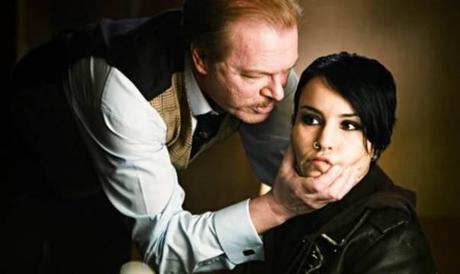
Salander and her guardian/rapist from the Swedish version, upon whom she wrecks horrific (but arguably justified) vengeance.
With that said, others have found that the rape scenes have had some value. The Rape, Abuse, and Incest National Network, or RAINN, the non-profit awareness and action group founded by singer-songwriter Tori Amos, herself a victim of sexual assault, helped publicize the original Swedish film to demonstrate the horrors of rape and to celebrate Salander’s proactive response against her attacker. That’s certainly their prerogative; I have no doubts that their reasoning was for the best and certainly, I hope the scenes open people’s eyes to barbarity of sexual assault. But again, I return to the idea of context; the rape and the revenge could be effective (it unfortunately could also be some people’s idea of torture porn), but I think it is undermined by the various works’ attempts to turn Salander into an overtly sexualized object. This is particularly problematic in the American film; its use of nudity is often rather discomforting, since it appears willing to eroticize Rooney Mara’s copious nudity after utilizing it earlier for the explicitness of its earlier rape scene. Being fair, the Swedish film also often left little of Noomi Rapace’s body to the imagination – but they seemed less willing to linger on the details of either rape or sex than the American film did. This, in combination with the remake’s humanization of Salander’s rapist, in that they had him show some regret prior to Lisbeth taking her brutal retribution, doesn’t help any.
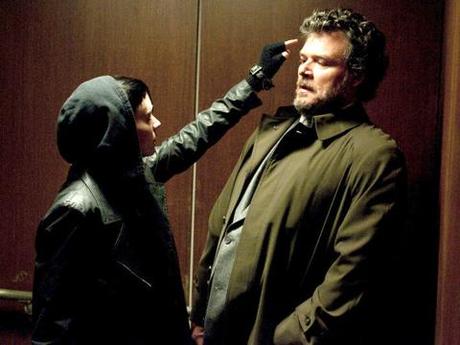
The victim victimizing her attacker: Salander intimidating her rapist in the American version.
Trying to otherwise compare the two films, qualitatively speaking, proves to be something of a wash: the original film had an authenticity the remake lacked, while the remake has a technical proficiency and quality of craftsmanship that the original didn’t. In the end, though, the first film was ultimately aided by Rapace, who added more to the part than the part probably deserved. Rapace was more a woman playing a woman who looked like a woman, and elevated it above being yet another portrayal of the Broken Girl. While the decision of Rapace’s Salander to sleep with Blomkvist is still as completely inexplicable as it is in the other versions, thanks to her, they feel less like the misguided behavior of a girl than the actions of a discerning woman capable of making those decisions for herself; and of course, there again remains the crucial decision by the Swedish filmmakers to depart from Larssen’s novel and portray Salander as independent of and somewhat indifferent to Blomkvist’s affections. In the Swedish film story, she seems to be having sex with him because he was what was handy, and thus does not want a relationship. The Fincher and Larssen Salander instead is portrayed as truly loving Blomkvist, and that focus, imposed inexplicably on the heroine by her male creators, undermines her as both character and symbol.
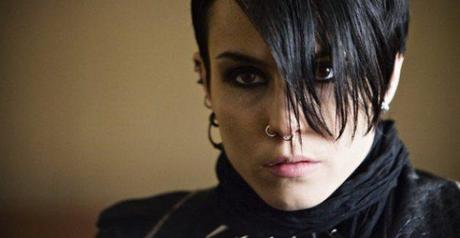
Older than the character she was portraying, Noomi Rapace helped her Lisbeth Salander seem more like an actual Woman than a "Broken Girl."
When I first learned that Fincher would be directing the American version of The Girl with the Dragon Tattoo, I remember becoming immediately pessimistic about it; granted, he’s been firmly associated with creepy, effective serial killer cinema since Seven, and the excellent Zodiac, about the investigation of the killer that once terrorized the San Francisco Bay Area, may be his best film to date. However, Fincher’s works have never displayed a strong perception of female identity and typically do not boast or even feature strong female characters. Instead, his films have typically been centered on masculine interrelationships and male self-identity in what are, otherwise, phallocentric worlds. Zodiac and Seven are both strong examples of this, but so in turn are his films The Curious Case of Benjamin Button, The Social Network, and, of course, Fight Club. The Social Network was also, in fact, pointedly criticized by many for its objectification of women, and the “head-in-a-box” reference, derived from the climax of Seven, has becoming an off-hand way for some feminist theorists to intone the victimization and usage of women as pawns in cinematic struggles between men. For those reasons, he did not seem to me a great choice for portraying Lisbeth Salander in an empowering context, and sadly I was proven correct. Fincher provides his film with creepy atmosphere to burn, and it is in that area that his Girl with the Dragon Tattoocan truly be said to be superior to the Swedish original. But he unknowingly understates the misogyny in his story and both he and writer Steve Zallian never hesitate to present Salander as a Broken Girl; she is fierce, determined, violent, and even terrifying when she needs to be, but in the end they chose to render the youthful punk ingénue of Larssen’s novel as someone looking for the support of a heterosexual relationship. It’s a shame, too, because Rooney Mara’s performance is superb, and though I think she lacks Rapace’s star charisma and maturity, she certainly gave the technically better performance.
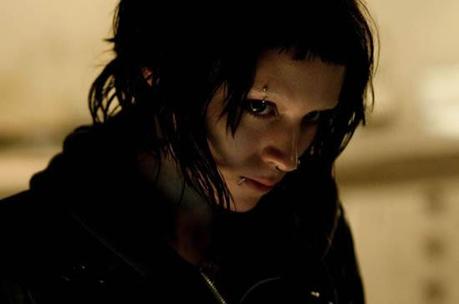
Rooney Mara may have given the technically "better" performance in her Lisbeth Salander, but in doing so became the personification of the "Broken Girl."
What’s really frustrating is that if Larssen had simply shown the restraint to not have Blomkvist sleep with his heroine, then it’s likely I wouldn’t have such a problem with his character. Having done so, however, he transformed what could have been readily perceptible as a strong female heroine, and still should be, despite my caveats, and reminds us that such characters are still at the behest of their male creators; their behavior and personal standings not driven by self-empowerment, but by the deep-seeded desires of their author’s sexual hang-ups. It’s sad that, if Larssen was really inspired by a real life rape victim to create Lisbeth Salander, that he wasn’t content enough to create a story that sought only to indict one form of patriarchy, and instead unwittingly in the end supported another.

Stieg Larssen, author of "The Girl with the Dragon Tattoo" and creator of Lisbeth Salander,. Larssen didn't live to see his books become international bestsellers, passing away from a heart attack in 2003.
What does it say that women seem to find the character of Lisbeth so appealing, despite the fact that she is a sex fantasy as much as an anti-patriarchal rebel and empowered rape victim? That answer, even if I knew it, would probably be best served for another essay. Personally though, I certainly don’t see it as a condemnation of the tastes of those women who have chosen Salander as a hero and even a role model, but a continuing condemnation of the kind of masculine hegemony that makes characters such as what Lisbeth Salander should represent comparatively rare. The simple fact that the American public has to read a series of novels from Scandinavia to find a female character that even hints at being proactive and profeminist, self-empowered and self-reliant – despite in the end falling short – may itself be as great a condemnation of male domination than anything Stieg Larssen ever conceived of.


posted on 04 October at 01:52
sigh that meme has nothing to do with bisexual women. it's about male bisexuality, and the photo is of a boy.